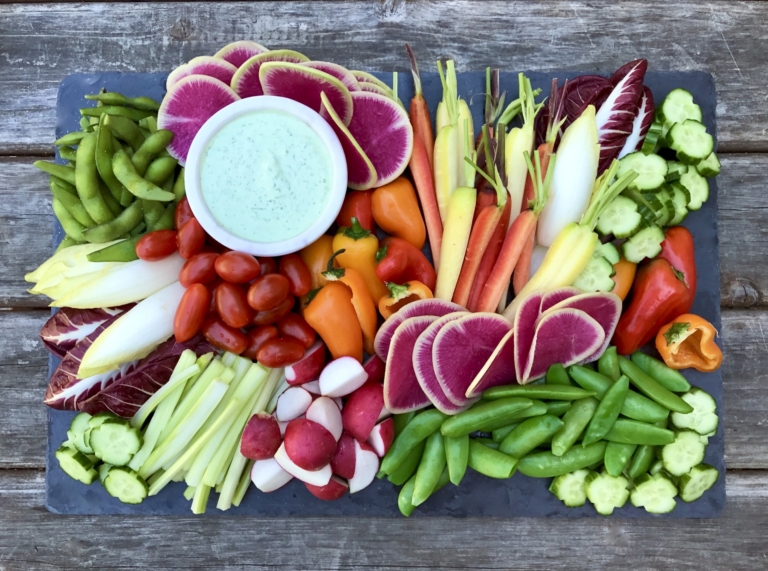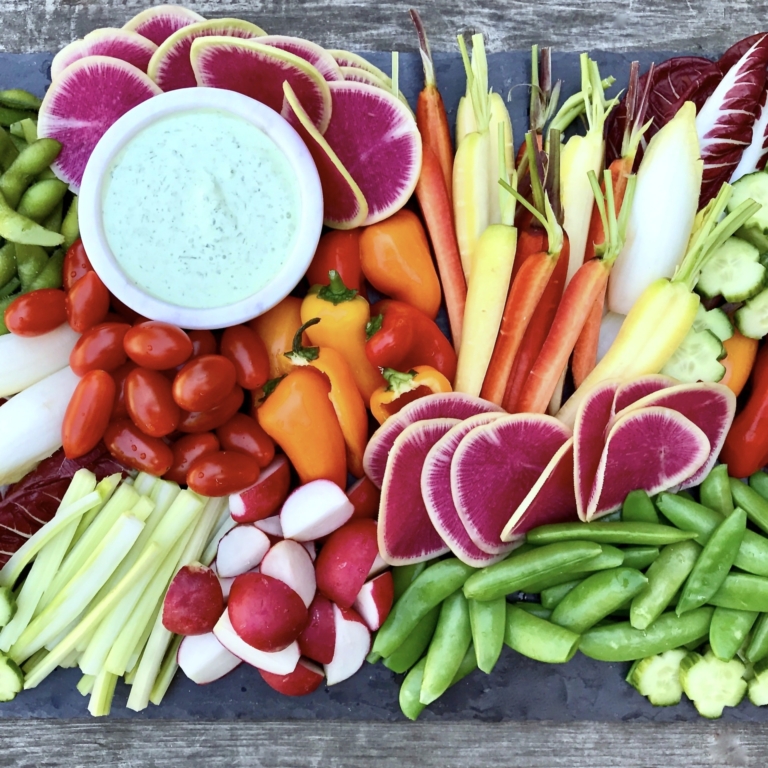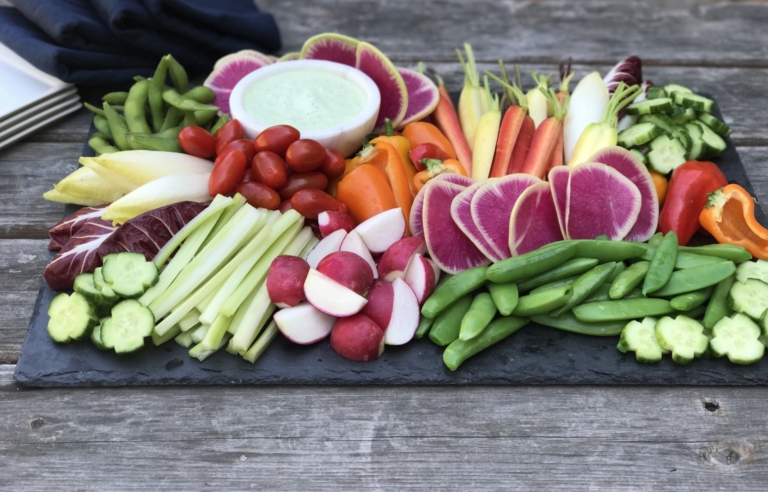How To Make A Crudité Platter Like A Pro

A crudité is a traditional French appetizer and an important part of entertainment if you ask me. If they are made right, they can be a great focal point, adding vibrant colors as well as offering a healthy food choice option for guests of all ages. I am a big vegetable eater generally, but I almost always offer a crudité platter when I entertain, especially if I don’t know the food preferences of my guests. Pair this with the perfect cheese board and some great wine and you have all you need for your next dinner party. Below are the most important factors to me in making an appealing crudité platter.
Seasonal Variety: A diverse selection of vibrant fresh vegetables is critical. For warmer months, watermelon radish and ripe cherry or grape tomatoes are great options. Lightly blanched sugar snap peas and asparagus offer a vibrant green pop of color. In cooler months, try adding radicchio or lightly roasted yellow, red, or striped beets to make your platter more interesting and earthy. I think it’s very important, when possible, not to buy pre-cut vegetables: they are often old, dry, and tasteless. Freshly cut vegetables will make all the difference in the world, despite the extra effort they take. I suggest 5-8 types of seasonal vegetables, making sure to include simple options for those picky eaters–carrots and celery may not be “exciting” but they are loved.
Abundance: One of the biggest issues with crudité platters is when there is not enough, or there is not enough balance. Variety is important, but volume is as well. To make the platter welcoming and appealing, the keyword is making it bountiful. A full platter is more inviting and makes guests want to dive in and enjoy.
A Great Dip: Most people dip. Some don’t. But honestly, most people prefer vegetables with a rich, creamy dip, I know I do. There is lots of room here for what kind of dip you use, just make it a good one and avoid a vinaigrette, which is not guest-friendly. I have used a Greek yogurt green goddess dip by Melissa Clark, which I have only lightly adapted, it’s a sure crowd-pleaser. I love that option because the herb flavors complement the garden vegetables well. Creamy avocado-based dips are great, and a red bell pepper sauce or a spicy Sriracha are interesting choices as well.
Arrangement: There are two important things to remember here: crudité vegetables should be (1) cut to make them easier to eat, and (2) look appealing. Different shapes and sizes allow for better visual balance. A channel knife, for example, can be used with cucumbers to make them look like a flower shape, and a vegetable peeler can make them look like ribbons that can be rolled. Split your baby carrots lengthwise to make them bite-size. Vegetable arrangement is just as important: organized but not too neat is ideal. Alternate colors, shapes, and sizes. Small piles all around that blend are less intimidating than large isolated piles. A well-arranged vegetable display will be so visually appealing, that people will want to dive right in and enjoy your masterpiece.
Green Goddess Dip For Crudité Platter
Ingredients:
- 1/2 cup packed fresh dill
- 1/2 cup packed fresh mint
- 1/2 cup packed fresh parsley
- 1/2 cup packed fresh basil
- 2 garlic cloves, chopped
- 2 scallions, white and green parts, sliced
- 1 1/2 tablespoons freshly squeezed lemon juice
- Pinch Kosher salt, more to taste
- 1/2 cup Extra Virgin olive oil
- 1/2 cup crumbled feta cheese
- 1/2 cup whole fat Greek yogurt
- 1/4 cup mayonnaise, optional
Directions:
- Place the dill, mint, parsley, basil, garlic, scallions, lemon juice and salt in a food processor and process until finely chopped.
- With the motor running, drizzle in the olive oil until incorporated. Add feta and process until smooth. Pulse in the yogurt. Taste dip and add more salt, if desired. If you like a creamier, richer dip, add mayonnaise and pulse to combine.
- Serve the dip immediately or can be stored in refrigerator for up to 3 days.





